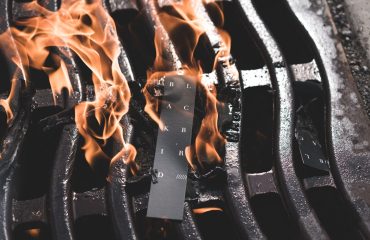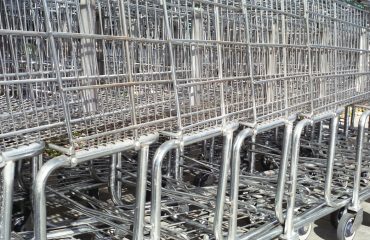body { font-family: sans-serif; line-height: 1.6; }
h1, h2, h3 { color: #333; }
img { max-width: 100%; height: auto; }
Cogeneration systems, also known as combined heat and power (CHP) systems, are crucial for boosting energy efficiency and reducing environmental impact. While the focus often falls on the technological aspects, the underlying material choices significantly impact the system’s performance, lifespan, and safety. Steel, in its various forms, plays an unsung hero role in the robust construction and reliable operation of these vital energy plants. This post delves into the critical relationship between steel and cogeneration, exploring the selection criteria, different steel grades, and their respective applications.
Choosing the Right Steel Grade for Cogeneration Systems
Selecting the appropriate steel grade is paramount for cogeneration systems. The choice depends on several factors, including operating temperature, pressure, corrosive environment, and the specific component being manufactured. Factors like weldability, formability, and cost also play a significant role. Commonly used steel grades include:
- Carbon Steel: A cost-effective option suitable for lower-pressure applications and components not exposed to highly corrosive environments. However, its corrosion resistance is limited, necessitating protective coatings in many instances.
- Low Alloy Steel: Offers improved strength and higher creep resistance compared to carbon steel, making it suitable for higher-temperature and pressure applications. Various alloying elements enhance its properties, tailoring it to specific needs.
- Stainless Steel: Excellent corrosion resistance makes stainless steel ideal for components exposed to harsh conditions, such as those in contact with water or flue gases. Different grades of stainless steel (e.g., 304, 316) offer varying degrees of corrosion resistance and high-temperature strength.
- Heat-Resistant Steel: Specifically designed to withstand high temperatures without significant loss of strength or creep. These steels are essential for components within the combustion chamber and heat exchangers.
Corrosion Resistance: A Critical Factor in Steel Selection
Cogeneration systems often operate in environments prone to corrosion. Water, steam, flue gases, and chemicals can all contribute to material degradation. Therefore, selecting steel with appropriate corrosion resistance is crucial for ensuring the system’s longevity and preventing costly repairs or failures. The choice depends on the specific environment and the component’s location within the system. Protective coatings, such as paints, linings, or galvanization, are often employed to enhance corrosion resistance, especially for carbon steel components.
Stainless steel grades, particularly those containing molybdenum (like 316), offer superior corrosion resistance in chloride-rich environments, which are common in some cogeneration applications. Proper material selection and the application of appropriate corrosion protection strategies significantly extend the lifespan of the cogeneration system.
High-Temperature Applications and Creep Resistance
Many components within a cogeneration system, particularly those in the heat recovery section, experience high temperatures. At elevated temperatures, steel undergoes creep, a time-dependent deformation under sustained stress. This can lead to dimensional changes and potential failure. Therefore, the selection of steel with high creep resistance is critical for ensuring the long-term reliability of these components. Low alloy steels and specialized heat-resistant steels are often employed in high-temperature applications within cogeneration systems to mitigate creep and maintain structural integrity.
Steel’s Role in Pressure Vessels and Piping Systems
Pressure vessels and piping systems are integral parts of cogeneration systems. These components must withstand significant internal pressures and temperatures. The selection of steel for these applications necessitates a careful assessment of material properties, including yield strength, tensile strength, and fatigue resistance. Code compliance, such as adherence to ASME Boiler and Pressure Vessel Code (ASME BPVC), is essential to ensure the safety and reliability of these critical components. Proper welding techniques and non-destructive testing are also crucial to guarantee the integrity of the welds in these high-pressure systems.
The Importance of Material Testing and Quality Control
Ensuring the quality of the steel used in cogeneration systems is paramount. Rigorous material testing throughout the manufacturing process is essential to verify that the selected steel grade meets the required specifications and maintains its integrity. Tests such as tensile testing, impact testing, and chemical analysis are commonly performed to assess the steel’s mechanical and chemical properties. Non-destructive testing methods, such as ultrasonic testing and radiographic inspection, are used to detect potential flaws or defects in the finished components, ensuring the safety and reliability of the cogeneration system.
In conclusion, steel is an indispensable material in cogeneration systems, contributing significantly to their efficiency, safety, and longevity. The careful selection of the appropriate steel grade, considering factors such as temperature, pressure, and corrosive environment, is crucial for optimal performance. Rigorous quality control and material testing are essential to ensure the system’s reliability and prevent costly failures. By understanding the nuances of steel selection and implementation within cogeneration, engineers and designers can optimize energy production and minimize environmental impact.
SEO Tags:
- Cogeneration Steel
- Steel for CHP Systems
- Combined Heat and Power Steel
- Corrosion Resistant Steel Cogeneration
- High-Temperature Steel Cogeneration




